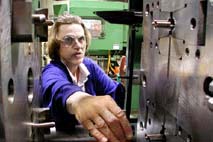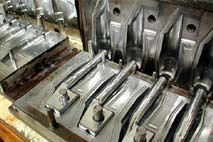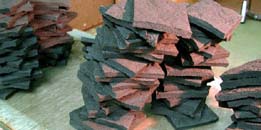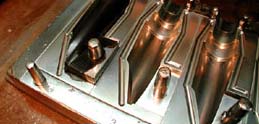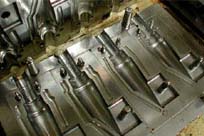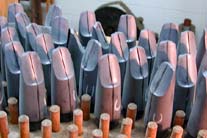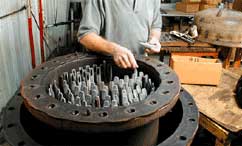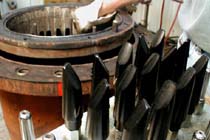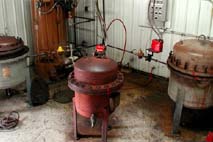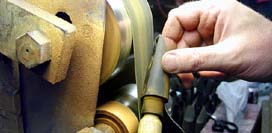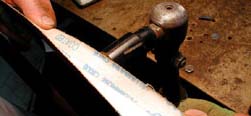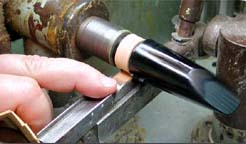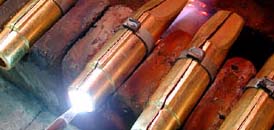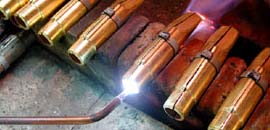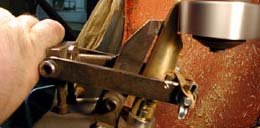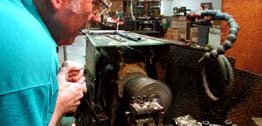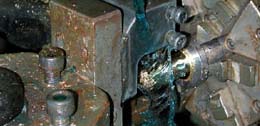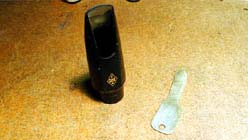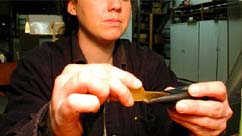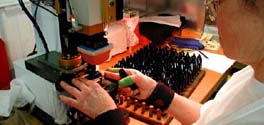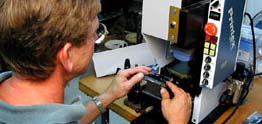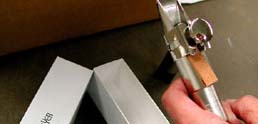Mouthpieces created for clarinets and saxophones
Over 100 Years of making Music
Our Process
Take a Virtual Tour of Our Facility
Follow the links below to learn more about how jj Babbitt produces the highest quality mouthpieces in our Elkhart, Indiana facility.
Molded Student Castings
Two years of intensive design work, through trial and error on sophisticated and expensive injection molding machinery has resulted in a nearly perfect plastic mouthpiece direct from the mold.
Rubber Molding
Vulcanizing
These oversized pressure cookers use water and pressure to draw sulfur and other elements out of the raw rubber mouthpieces. This curing process is called vulcanizing and can last up to 18 hours.
It’s through this process that the mouthpieces harden up and naturally darken in appearance. It took years for jj Babbitt to perfect this critical process. If not done properly, the rubber may become too brittle or form rock-hard crystalline chips, rendering the entire batch useless.
Plastic & Rubber Lathe Work
At the lathe, any remaining flashing is sanded off and the shank of the mouthpiece is turned to exacting specifications. The tolerance for these steps must be within 5 thousandths of an inch.
Sanding & Ragging
All hard rubber and some plastic mouthpieces are meticulously sanded by hand to remove surface flashing and imperfections.
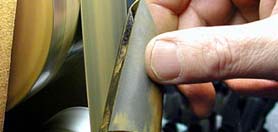
Polishing & Buffing
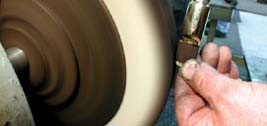
Face Machining
This is the facing area, where the table is smoothed and flattened for the reed. The table must curve slightly near the tip, and at a specific point on the mouthpiece. Special care is given to ensure the side rails and the tip rail are uniform in width and within specifications.
Corking
Using this special process, a strip of cork is applied around the circumference of the shank at a precise thickness to ensure a snug fit into the clarinet body.
Silver Soldering
Metal mouthpieces are forged in two pieces. The two halves are soldered together with silver solder and then the joints and ridge are ground smooth for a seamless appearance.
Metal Mouthpiece Mill Work
Metal Lathe Work
Hand Finishing
With precision much like a skilled dentist, jj Babbitt craftsmen remove excess material from inside the window area of the mouthpiece.
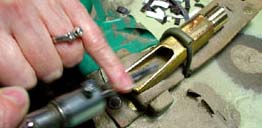
Tip Finishing
Tip finishing is one of the most critical areas in the plant. When a mouthpiece reaches this station, it will receive the most intricate shaping, grinding, and detailed adjustments yet.

